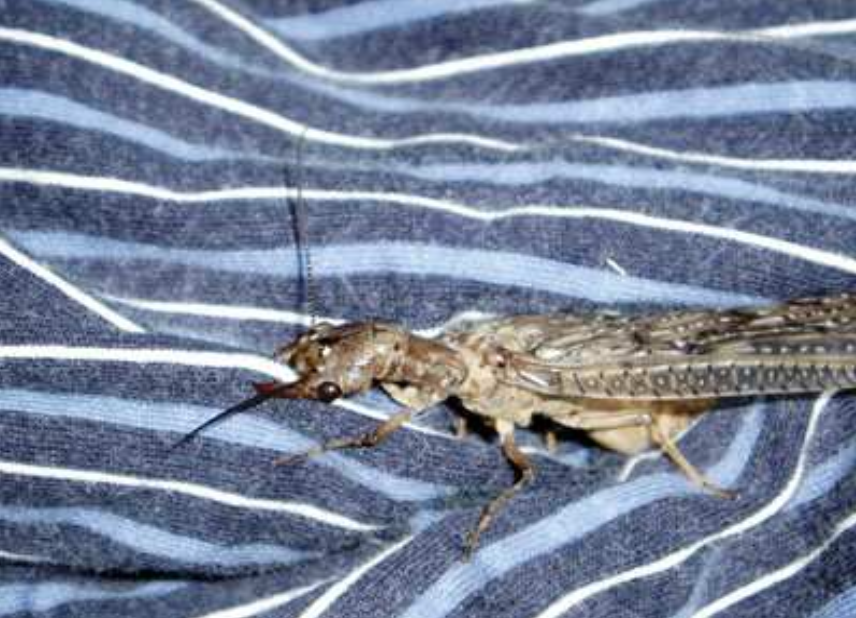Upon reaching Kolb Campground in the afternoon of day six, our group settled in for the evening. Bags were unloaded, tents were being pitched, dinner was being prepared, and the insects were stirring... Little did our group realize then, that where we had decided to camp was a hotspot for dobsonfly activity. Immediately after I had sat down to take off my wet shoes and relax from a long day of paddling, I was handed a large squirming insect the size of my thumb, and asked “What bug is that?” I examined it for a few seconds and responded, “My goodness it’s a huge megalopteran of some sort! Where did you find this?” “In the trees, and along the grass, they are all over!” he replied. Sure enough he was right. After some searching of my own I counted roughly three or four others in a thirty foot-wide radius from where I had been sitting. This event marked the first time I had ever seen a live megalopteran insect, and I quickly keyed this particular specimen to the dobsonfly family.
Later that evening, I also managed to capture a winged adult dobsonfly flying along the river. I had to be cautious handling it because it could potentially draw blood and I did not want to damage it, so I hastily wrapped it in an extra pair of pajama bottoms, so that I could show others this unique discovery. While holding it, I could feel it writhing, fluttering, squirming, and biting beneath the layers of cloth as I walked back to camp. Upon releasing it I began to realize how special and rare an occurrence this event had been.

If you thought ants in your pants was bad....
Dobsonflies, also called “hellgrammites” spend most of their lives in the water, as active predators (up to 2-3 years). They are generally not good swimmers, and prefer to crawl along the bottom near rocks in fast flowing currents to ambush other insects and small animals. When larval hellgrammites reach a certain size and stage of development, they exit the river and crawl onto land. There they find a tree, rock, or suitable habitat to form a cocoon and over-winter as a pupa. The pupa then emerges during the summer as a full fledged adult, and lives for only a few days.
During our rendezvous with the dobsonflies on the river, we managed to see 2 very distinct life stages: the larval stage pre-pupa, and the fully formed adult. It is extremely lucky that the timing our trip corresponded to their presence and emergence, as these insects often go unseen. Their discovery also gave us an answer as to what made a white bird-dropping-like accretion on the vertical portions and under-hanging rock faces of the cliffs that surrounded the river, where no birds could perch. These areas, as I would come to realize later, were the egg sites of the dobsonflies, and I managed to count about 20 or so the next day. So if and when you visit the Green River during the summer, just remember the bed bugs can bite so you might want zip your sleeping bags and tents up at night!

Stay very very still!
